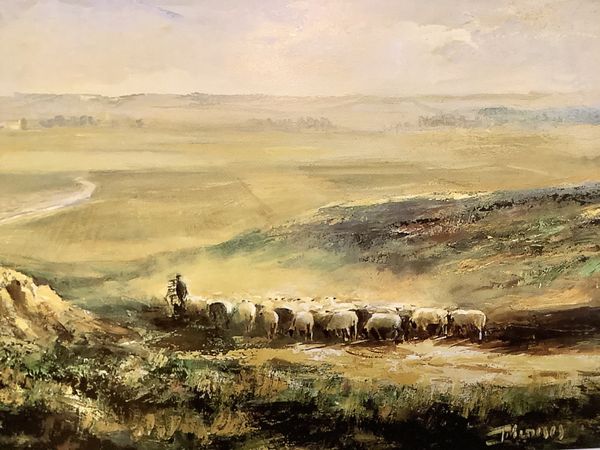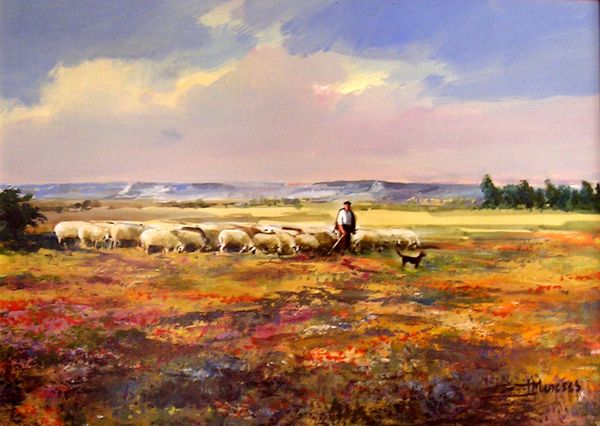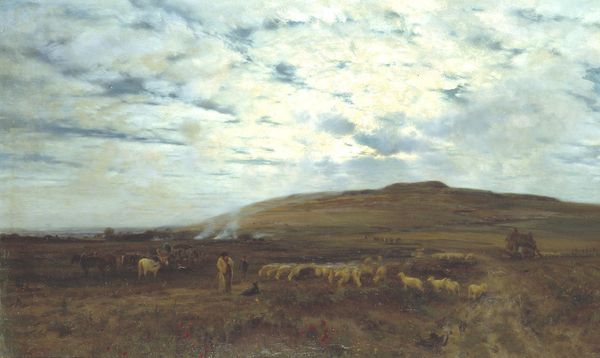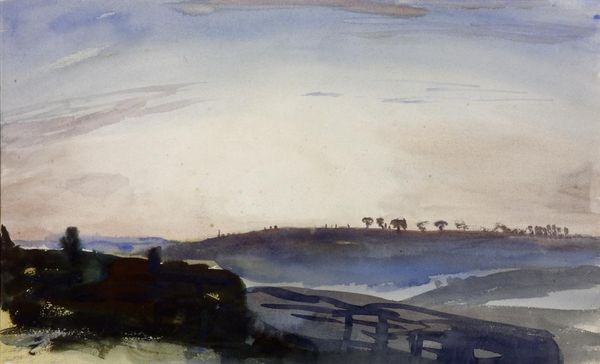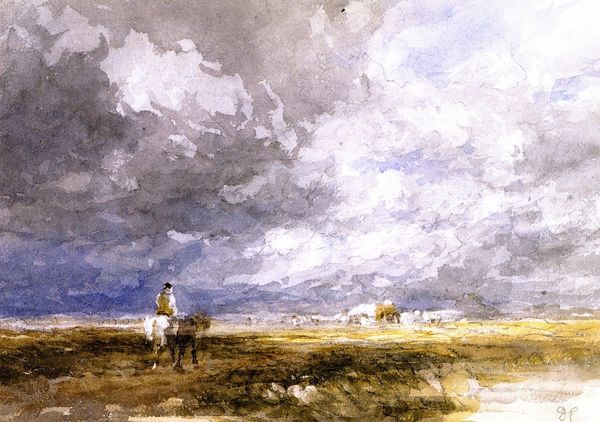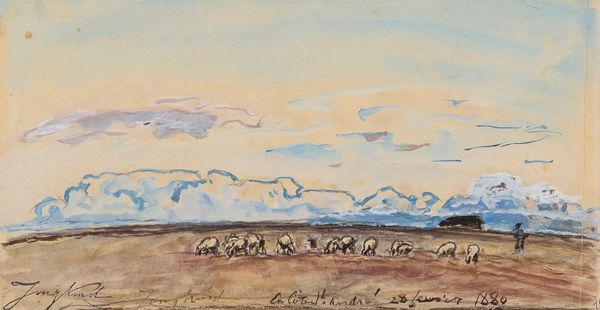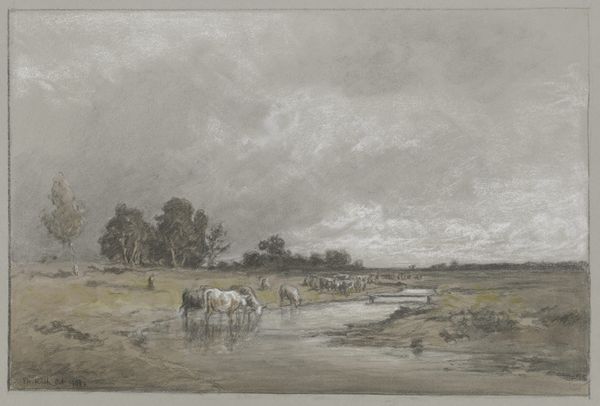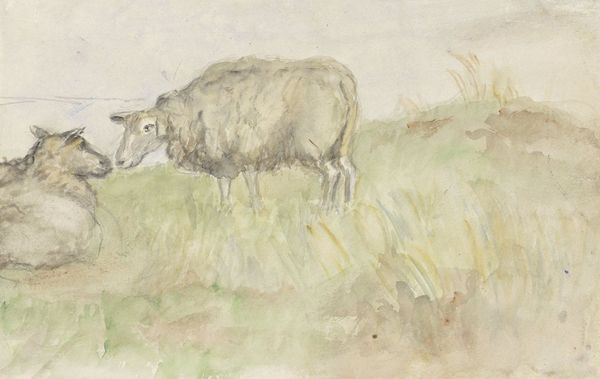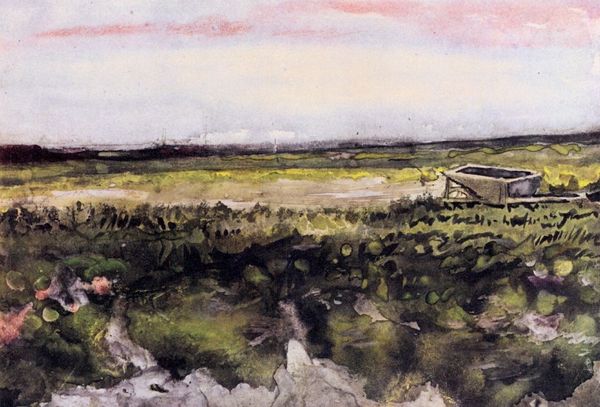
Copyright: Jesús Meneses del Barco,Fair Use
Editor: This watercolor on paper, “Castilian Landscape,” was created by Jesús Meneses del Barco in 1972. The muted tones create a somber, almost melancholic atmosphere. There's a shepherd with his flock, seemingly small against the vast, undefined space. What do you see in this piece, beyond the surface level? Curator: I see a subtle commentary on labor, land, and identity within the context of Francoist Spain. The subdued colors and the indistinct figures of the sheep and shepherd speak to a kind of homogenization, perhaps a suppression of individuality characteristic of the regime. Do you notice how the landscape seems to swallow the figures? Editor: Yes, it’s as if the landscape is indifferent to their presence. The blending of the shepherd and the sheep might imply a loss of personal identity or agency, maybe a struggle within oppressive systems. Curator: Precisely. The "Castilian Landscape" is not just a scenic view; it is an embodiment of the sociopolitical tensions of the time. Meneses seems to be engaging with the tradition of landscape painting to make a poignant statement about marginalization and the silent resistance inherent in everyday life. The muted colors also echo the limited freedoms and constrained expression. Editor: That makes so much sense. It's easy to see landscape paintings as purely aesthetic, but this piece really pushes me to think about the social messages art can carry, even quietly. Curator: It urges us to consider how artists can embed critical perspectives within seemingly conventional forms. Thinking about how identity can be impacted by these external oppressions helps to contextualize and discover meaning within "Castilian Landscape." Editor: I will definitely look at landscapes with new eyes!
Comments
No comments
Be the first to comment and join the conversation on the ultimate creative platform.
